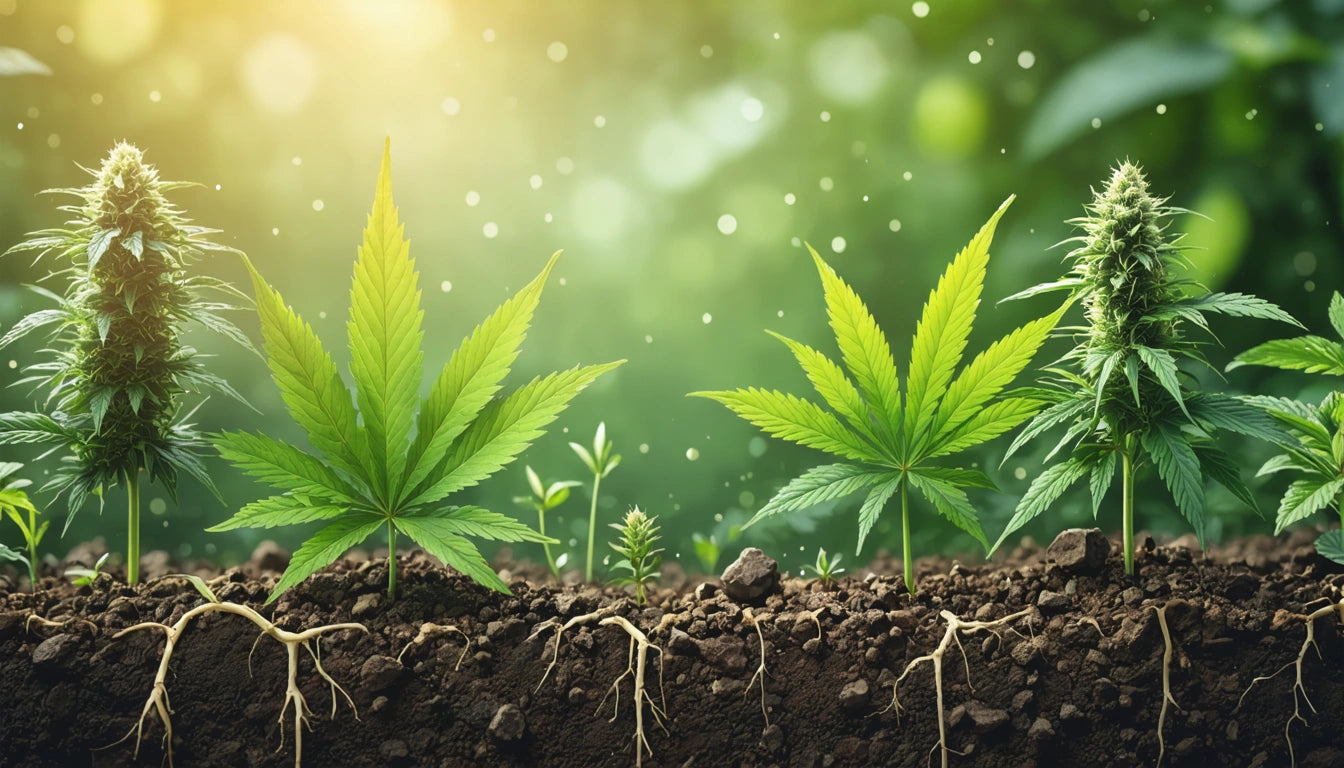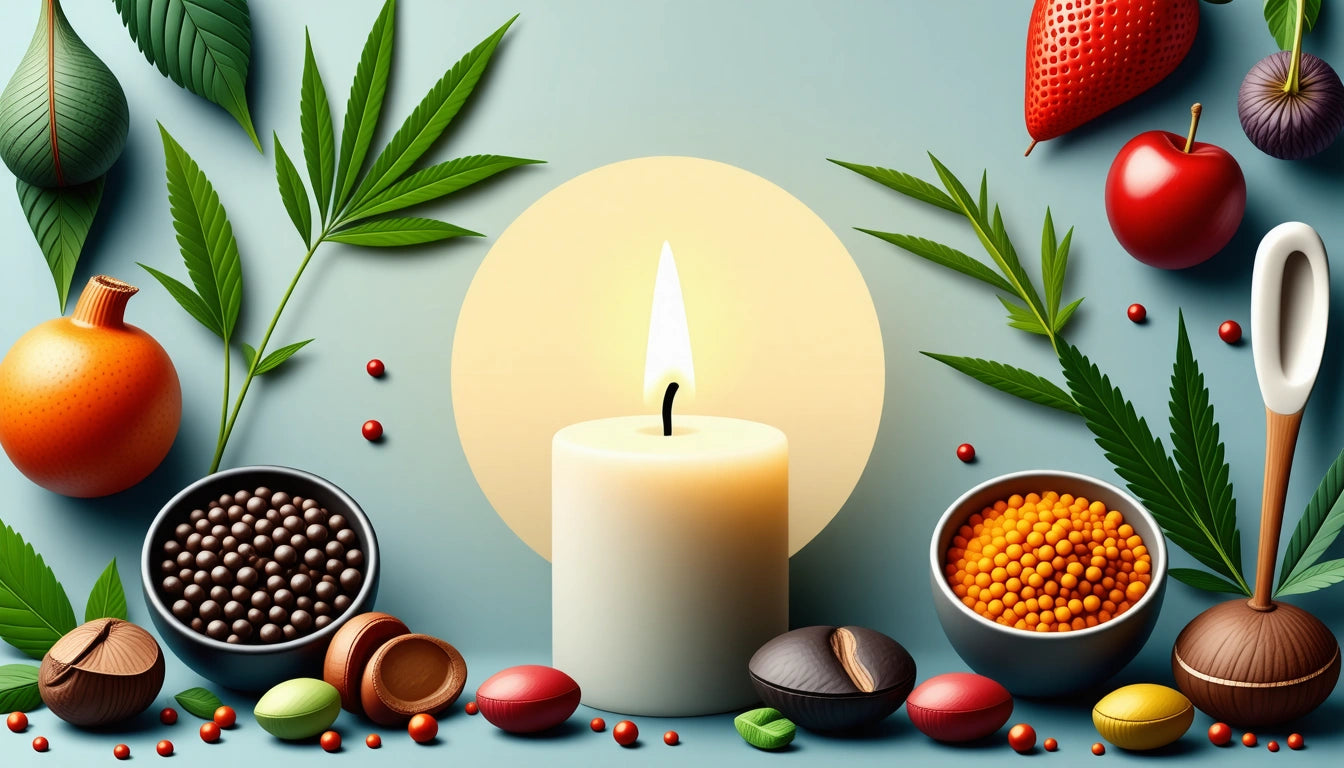Table of Contents
Mastering Cannabis Cultivation: How to Top Cannabis Plants
Topping is one of the most effective techniques for increasing cannabis yields and creating bushier, more productive plants. This high-impact training method transforms a plant's natural growth pattern by removing the main growth tip, encouraging multiple colas instead of a single dominant one. Whether you're a beginner or experienced grower, understanding how to top cannabis plants properly can dramatically improve your harvest results.
What is Topping and Why It Matters for Cannabis
Topping is a high-stress training technique that involves cutting off the main stem of a cannabis plant to create two new main colas. In its natural state, cannabis grows with apical dominance, meaning it focuses growth energy on a single main cola. By removing this dominant growth tip, you redirect the plant's hormones and growth energy to the lower branches.
The benefits of learning how to top marijuana plants include:
- Increased yields by creating multiple main colas
- Better light penetration throughout the canopy
- More efficient use of growing space
- Shorter, bushier plants that are easier to manage
- More even canopy development
According to cannabis cultivation experts, properly topped plants can produce up to 200% more yield compared to untrained plants, making this technique essential for maximizing your growing space.
When to Top Your Cannabis Plants
Timing is crucial when learning how to top a marijuana plant. The plant needs to be mature enough to handle the stress but not so developed that topping becomes counterproductive.
Ideal Growth Stage
The best time to top your cannabis plants is when they have developed 3-5 nodes (sets of leaves). At this stage, typically 3-4 weeks into the vegetative phase, the plant has:
- Established a strong root system
- Developed enough foliage to continue photosynthesis
- Built up sufficient energy reserves to recover from the stress
As outlined in this guide on optimal timing, topping too early can stunt growth, while waiting too long reduces the benefits and extends recovery time.
Plant Health Indicators
Before you top a weed plant, ensure it's healthy and vigorously growing. Look for:
- Deep green leaves without discoloration
- Strong, sturdy stems
- Consistent new growth
- No signs of nutrient deficiencies or pests
How to Top Cannabis Plants: Step-by-Step Guide
Learning how to top your cannabis plants properly requires attention to detail and the right tools. Follow these steps for successful topping:
Tools You'll Need
- Sharp, clean scissors or pruning shears
- Isopropyl alcohol (70-90%) for sterilization
- Optional: rooting hormone for clones
When working with any plant training techniques, it's important to maintain a clean environment to prevent contamination. We recommend using secure storage containers with child-resistant lids for keeping your tools and supplies organized and safely away from children.
The Topping Process
- Sterilize your cutting tool with alcohol
- Identify the main stem and newest growth at the top
- Cut the main stem above the 3rd-5th node, removing the top growth tip
- Make a clean cut at a 45-degree angle about 0.5cm above the node
- Optional: save the cut top for cloning
After topping, your cannabis plant will temporarily slow growth as it recovers from the stress. Within 1-2 weeks, you'll notice new growth emerging from the nodes below the cut, creating two main stems where there was previously one.
Advanced Topping Techniques for Experienced Growers
Once you've mastered the basics of how to top weed plants, you can explore more advanced techniques to further increase yields and control plant structure.
Multiple Toppings
Learning how to top cannabis plants multiple times can exponentially increase the number of main colas. After the plant recovers from the initial topping, each of the two new main stems can be topped again, creating four main colas. This process can be repeated to create 8, 16, or even 32 main colas, though each successive topping extends the vegetative period.
For multiple toppings, allow 1-2 weeks of recovery between sessions and ensure the plant remains in the vegetative stage long enough to fully develop all new growth sites.
Combining with Other Training Methods
Advanced growers often combine topping with other training techniques for maximum effect:
- LST (Low Stress Training): Bending and tying down branches to create an even canopy
- FIMing: A variation of topping that removes only part of the growth tip
- Manifolding/Mainlining: Creating a symmetrical structure with multiple main colas
- ScrOG (Screen of Green): Using a screen to support and spread out topped branches
According to cultivation experts, combining these techniques can create incredibly productive plants with maximized light exposure and airflow throughout the canopy.
Common Topping Mistakes to Avoid
When learning how to top a weed plant, beginners often make several common mistakes that can reduce effectiveness or harm the plant:
Timing Errors
- Topping too early (before 3 nodes) can severely stunt growth
- Topping too late reduces benefits and extends recovery time
- Topping during flowering will significantly reduce yields
Technique Problems
- Cutting too close to the node can damage future growth sites
- Using unsterilized tools can introduce pathogens
- Removing too much growth in one session can overwhelm the plant
Recovery Missteps
- Increasing nutrients immediately after topping (wait until new growth appears)
- Topping a plant already experiencing stress from other factors
- Not providing adequate light to lower growth sites after topping
Avoid these mistakes by planning your topping strategy in advance and ensuring your plants are healthy before applying any high-stress techniques.
Maximizing the Benefits of Topping for Higher Yields
To get the most from your topping efforts, implement these strategies for optimal results:
- Maintain a consistent vegetative light schedule (18-24 hours of light)
- Provide sufficient nutrients to support new growth development
- Consider supplemental training techniques to further enhance structure
- Allow adequate recovery time before switching to flowering
- Ensure all new growth sites receive direct light exposure
When done correctly, topping transforms a single-cola plant into a multi-headed production powerhouse. The technique requires patience and precision but rewards growers with significantly improved yields and more efficient use of growing space.
By mastering how to top marijuana plants, you'll develop a fundamental skill that can dramatically improve your cultivation results across different strains and growing environments. Whether you're growing for personal use or commercial production, topping remains one of the most valuable techniques in the cannabis grower's toolkit.











Leave a comment
All comments are moderated before being published.
This site is protected by hCaptcha and the hCaptcha Privacy Policy and Terms of Service apply.